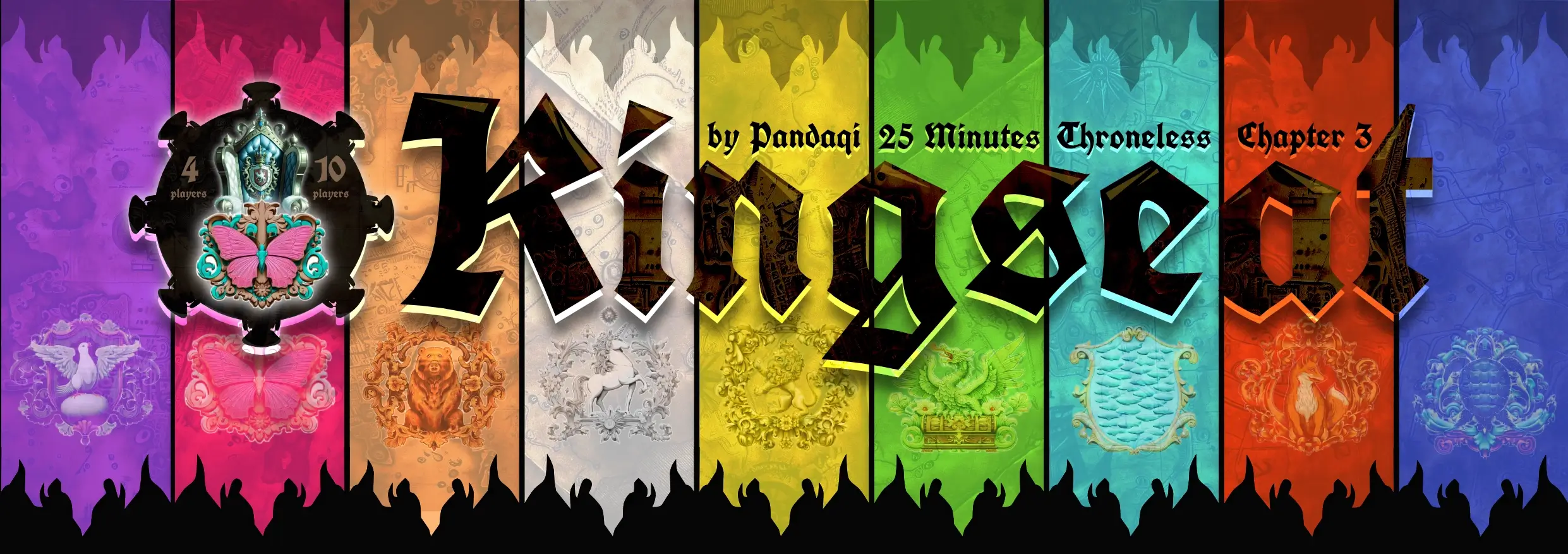
Pick (at least) as many Princes as there are players. Add all their cards to the deck and shuffle. Now deal equally many cards to each player ( = their Hand). Any leftover cards are shown and go into the Tell.
Pick a position. This is the “Kingseat”. Whoever sits (or stands) there, is the King.
Players exchange some cards to design the Hand they want.
- Each player gives two Hand cards to the player on their right (simultaneously).
- Each player gives two Hand cards to the player on their left (simultaneously).
- Each player picks one Hand card and puts it away somewhere safe. This is their secret Loyalty

Finally, keep two piles of cards during the game.
- A facedown pile of votes (the Tell).
- A faceup pile of discarded cards (the Discard)
The game ends when all players are out of cards.
Reveal the Tell and count the votes. The Prince with the most votes wins. All players whose secret Loyalty matches that Prince, win!

Rounds are played simultaneously. They have two simple phases: Give Cards and Vote.
Give Cards: all players give away 1 card to their neighbor. The direction alternates between left neighbor and right neighbor (per round).
Vote: all players secretly pick a card from their Hand ( = their Vote).
- Once everyone is ready, reveal the cards.
- The Prince with the most votes wins.
- Tied? The one closest to the Kingseat, looking in clockwise order, wins.
All winning cards go into the Tell.

For each remaining card, the player gets a choice. (Do this from Kingseat, clockwise, until all cards are gone.)
- Either execute the action on your card.
- Or swap places with another player and swap 1 Hand card with them.
Either way, add the card to the Discard.

Bluffing, making deals, lying, it’s all very much allowed. That’s it! Have fun!
The packs below are roughly in the order recommended. Further down the list, Princes are more complicated or less balanced. For your first game(s), pick the first few Princes.
Do not include two Princes of same or similar color in the same game, if possible. Such Princes do similar things and will lead to unbalanced or confusing games if both are included.
Each Prince has two “Dark cards”. Each has a unique action that is often more powerful. They’re important for balancing each Prince, but can be left out if so desired.
The cards explain themselves. The overview below exists to help you make a decision or clarify potential rule misunderstandings.
